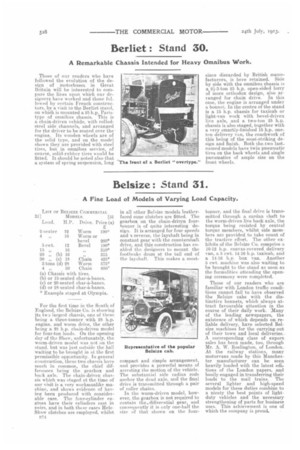Berliet : Stand 50.
Page 12

If you've noticed an error in this article please click here to report it so we can fix it.
A Remarkable Chassis Intended for Heavy Omnibus Work.
Those of our readers who have followed the evolution of the design of Inotorbuses in Great Britain will be interested to compare the lines upon which our designers have worked and those followed by certain French constructors. by a visit to the Berliet stand, on which is mounted a 25 h.p. Paristype of omnibus chassis. This is a chain-driven vehicle, with rolledsteel side channels, and arranged for the driver to be seated over the engine. Its wooden wheels are of the solid type, and on the model shown they are provided with steel tires, but in omnibus service, of course, solid-rubber tires would he fitted. It should be noted also that a system of spring suspension, long
since discarded by British manufacturers, is here retained. Side by side with the omnibus chassis is a 2i-3-ton 25 h.p. open-sided lorry ot more orthodox design, also arranged for chain drive. In this case, the engine is arranged under a bonnet. In the centre of the stand is a 15 h.p. chassis for taxicab or light-van work with bevel-driven live axle, and a two-ton '25 h.p. chassis is also staged, together with a very smartly-finished 15 h.p. oneion delivery van, the coachwork of this being of the most-striking design and finish. Both the.two lastnamed models have twin pneumatic tires on the back wheels and single pneumatics of ample size on the front wheels.








































































